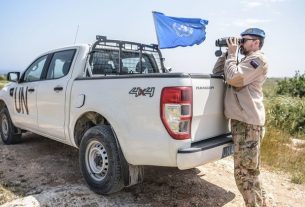|
Getting your Trinity Audio player ready...
|
Days before Christmas, the Uganda Wildlife Authority (UWA) acted like angel Gabriel who told Mary that she would be the mother of the Son of God by proclaiming that everything is set for the re-introduction of the white rhinos into the West Nile region. Many have probably wondered how possible it can be since the last white rhino vanished from the West Nile region over 40 years ago.
Nonetheless, UWA’s John Makombo, the Director in Charge of Conservation, reassures that the reintroduction of the white rhinos in Ajai Wildlife Reserve and its environs in the current Madi Okollo district is part of the biodiversity enhancement program for Uganda, which seeks to among others promote tourism in the West Nile region. The rhino population at the Ziwa Rhino Sanctuary in Nakasongola District where a government breeding programme has been running since 2006 has reportedly increased to 35 individuals and is now ready for re-introduction into the Wild.
In 2013, a committee that was organizing celebrations to mark a 100 years of West Nile becoming part of Uganda tried to engage the US government over reports that their former president, the late Theodore Roosevelt participated in the plundering of the animals.
They maintained that “there is a lot of evidence” that makes the former president culpable for the extinction of the animals that had naturally occurred in the region. “In fact history has it that the last of the old-style explorers was Theodore Roosevelt, who came to Africa after leaving the White House in 1909, and went on a hunting spree that bagged 296 wild animals, including 17 lions”, they declared. A clipping of The New York Times newspaper of January 15, 1910, which they shared claims that the former president personally shot a white rhino cow and young rhino on his first visit in the region and a party was held in the present day Rhino Camp in Madi Okollo district which was named after this hunting expedition.
“Rhinos were so common in all these areas that in 1919 Theodore Roosevelt’s headquarters for the Smithsonian African Expedition collecting rhino products was named Rhino Camp. Here in 1932 Captain Pitman encountered 30–40 groups of at least seven individuals each within a day’s walk, and he could approach to within 7–8ft because they were unhurried by hunters and poachers”, reads another article they shared from The International Journal of Conservation of June 1982. Roosevelt’s experiences and pictorial memories (of the region), the committee alleges, gave foundation to US Museum of Natural History, but the US embassy in Kampala, Mr. Daniel Travis, advised the region to sort out the matter with Roosevelt’s family because he killed the animals on his own volition.
It is not clear what issues the talks would have addressed but I imagine a claim for compensation to the people of West Nile for the destruction of their natural heritage by a former US president who allegedly used his influence and the protection of his government to kill the white rhinos.
Surely, reintroducing this animal to West Nile will go a long way in enhancing the conservation practices by the people for their future generations to appreciate and be proud of their revived ancestral heritage. When writing this piece, my son actually asked me whether the white rhinos are indeed white. It took me nearly an hour explaining that the name “white rhinoceros” is said to be a mistranslation from Dutch to English. The English word “white” is said to have been derived by mistranslation of the Dutch word “wijd”, which means “wide” in English.
The word “wide” refers to the wide width of the white rhinoceros’ mouth that makes it different from other types of rhinoceros. Had the animals already been restored, it was going to be a few minutes’ drive to Ajai Wildlife Reserve to fully satisfy my son’s curiosity.
Mr Kefa Atibuni is a senior communication officer at Muni University.




